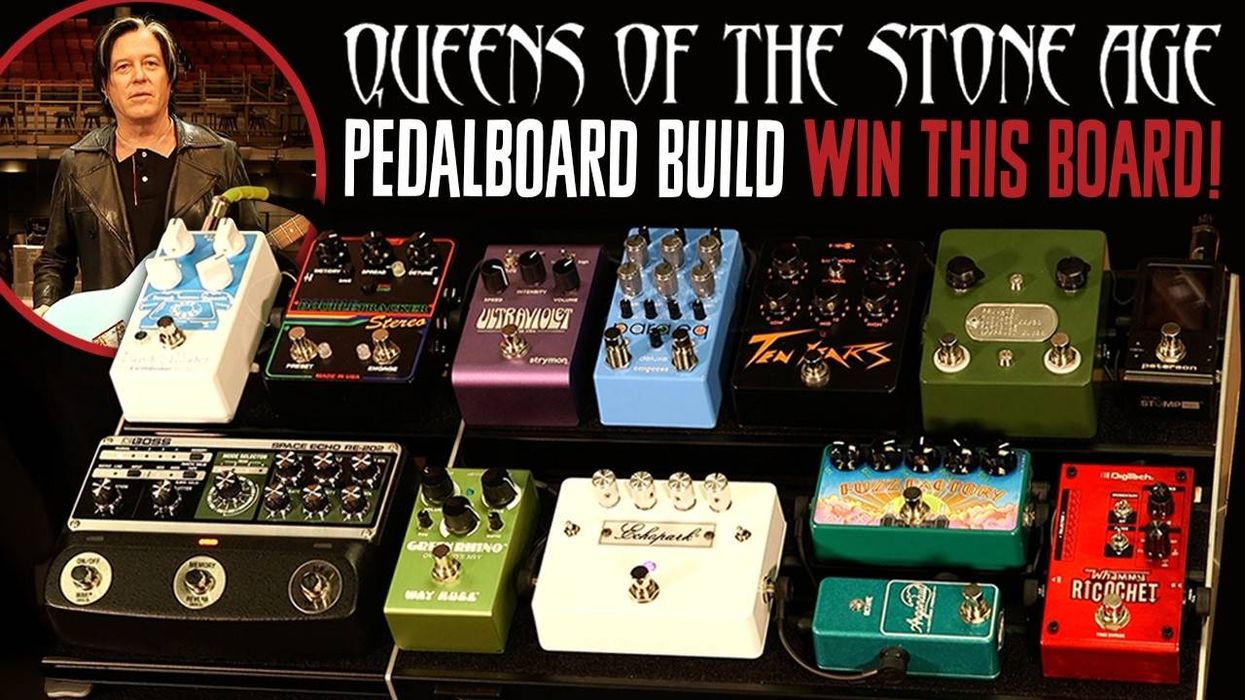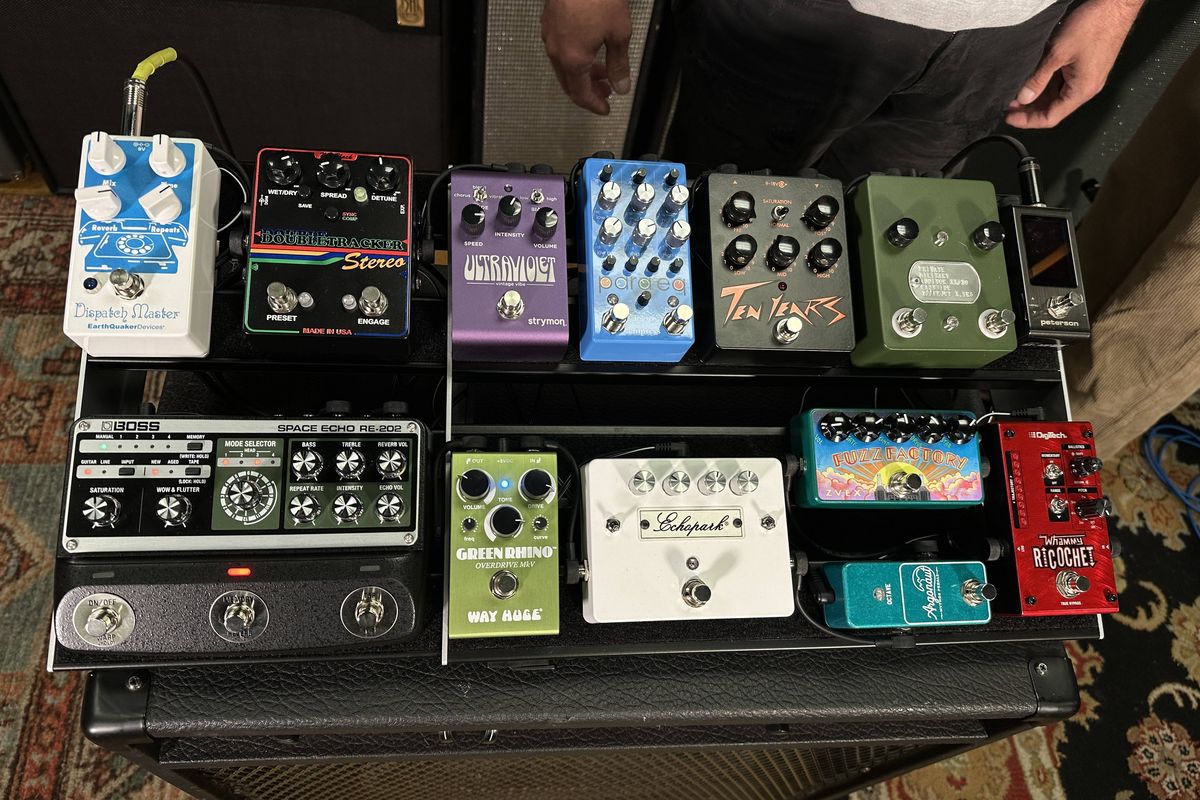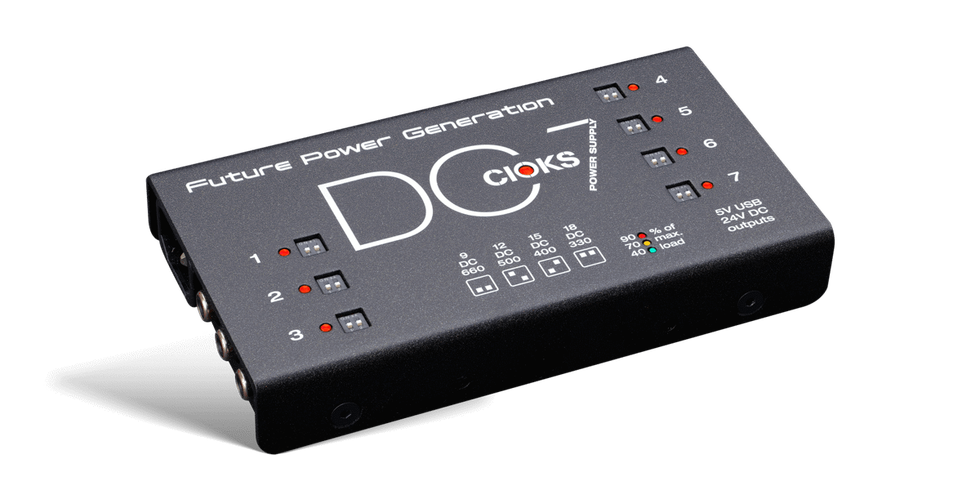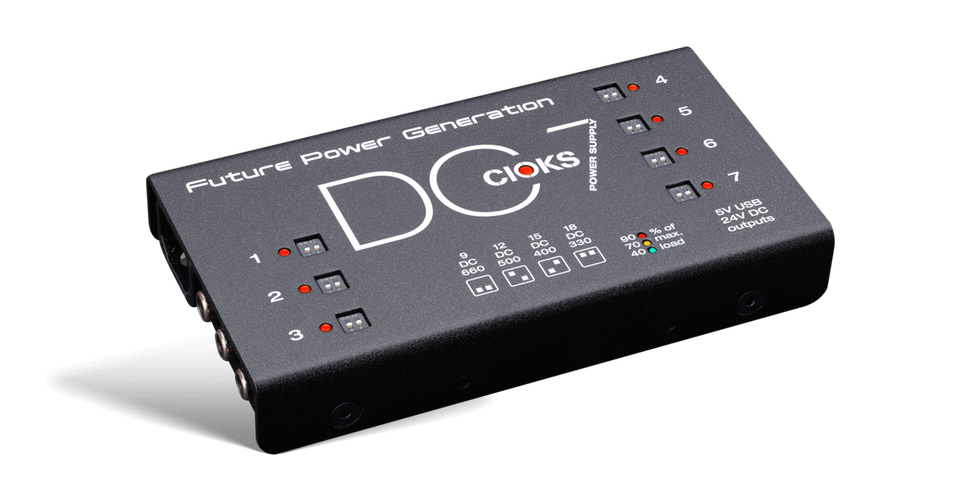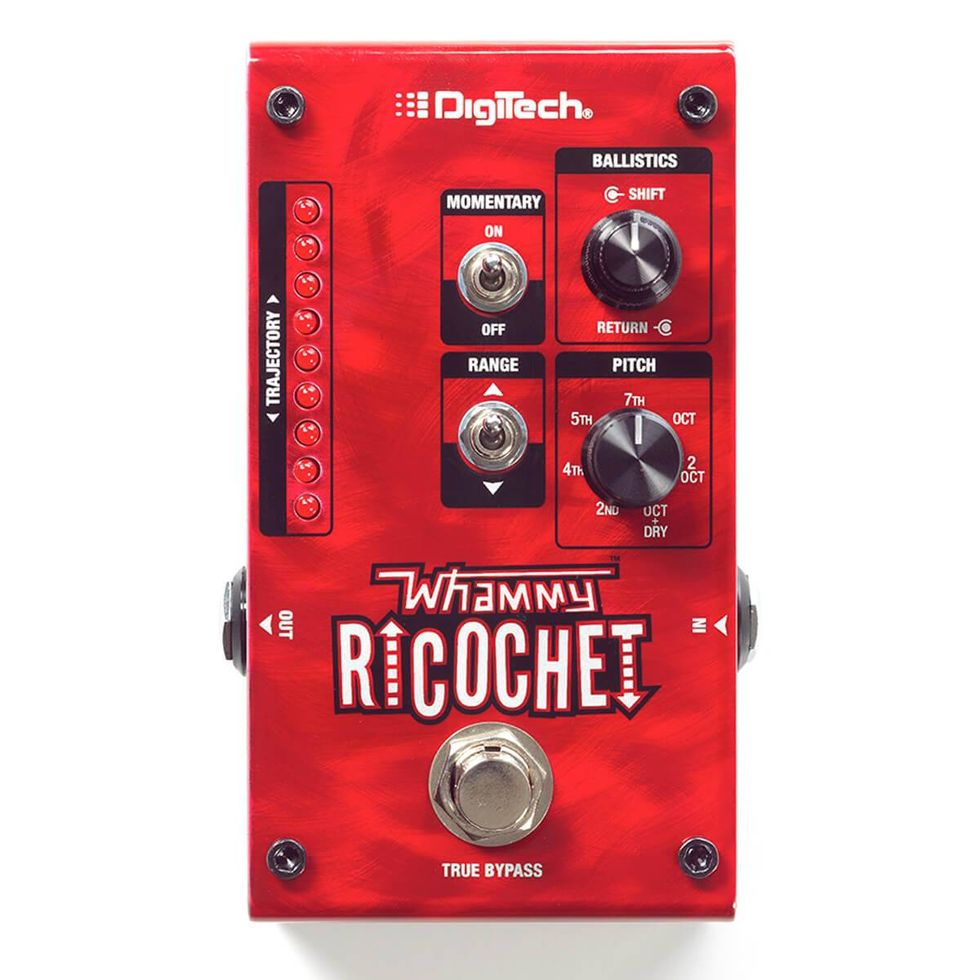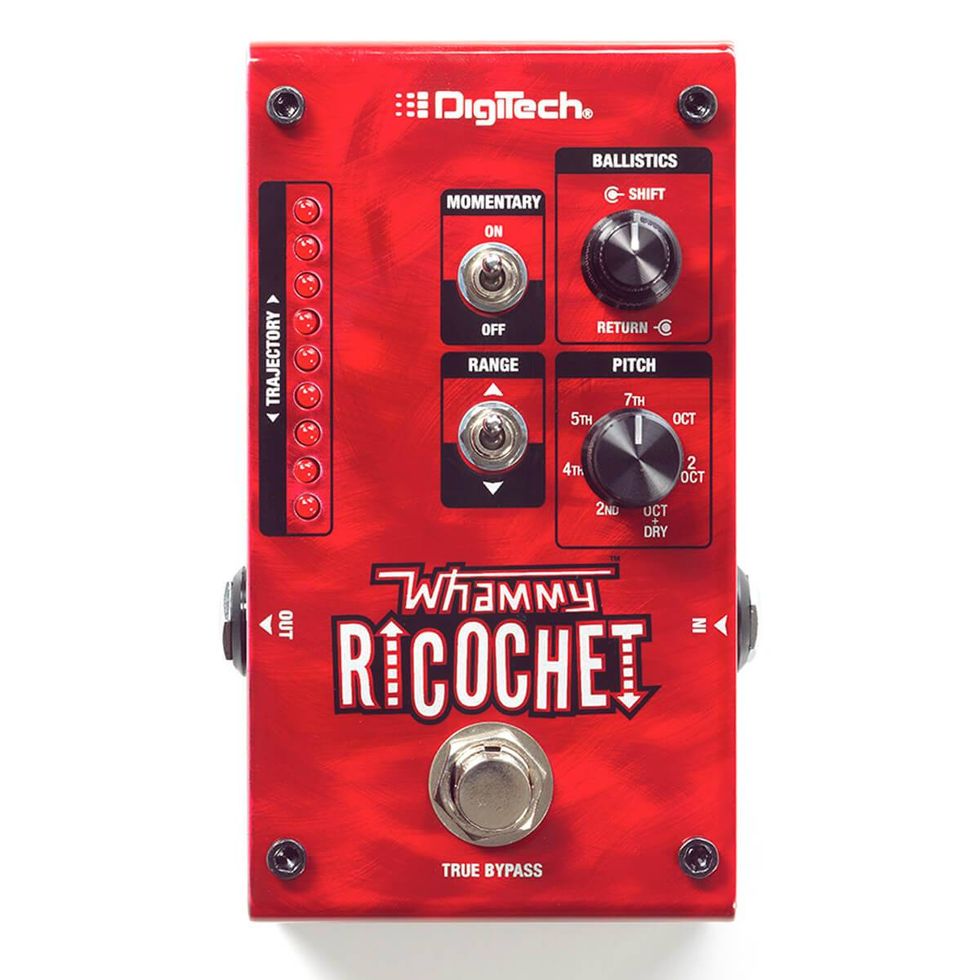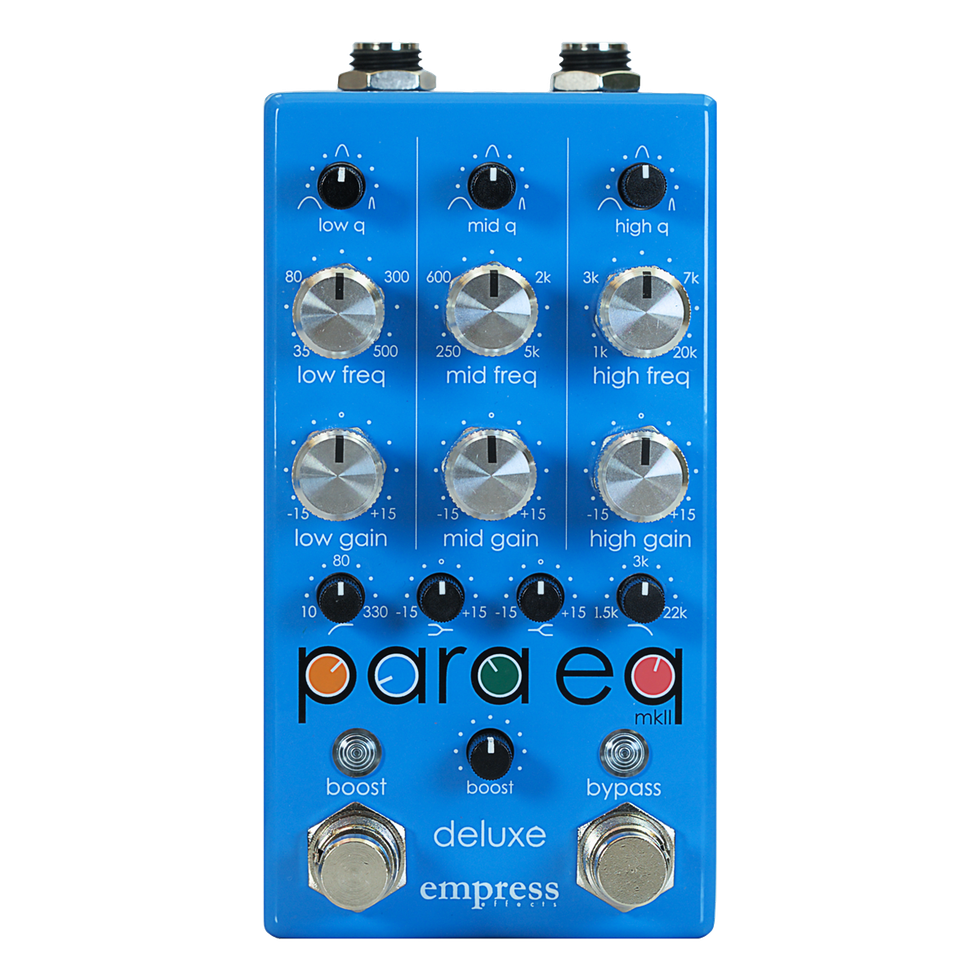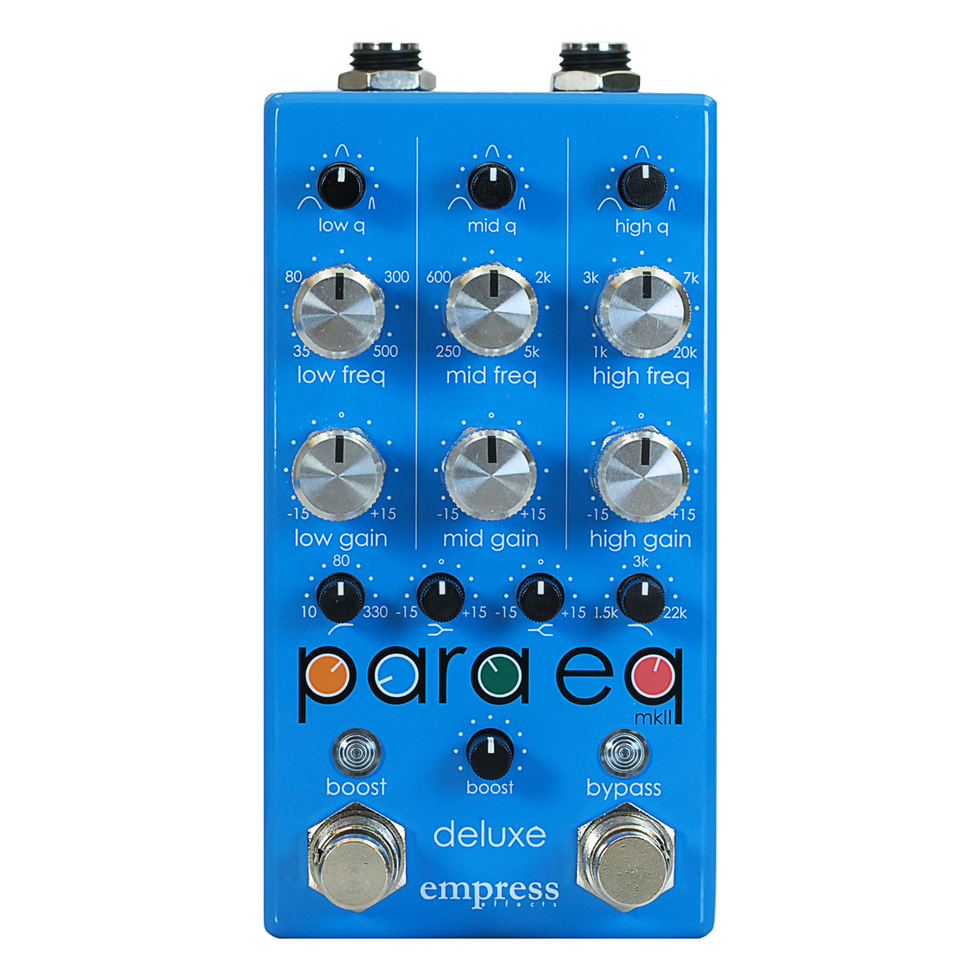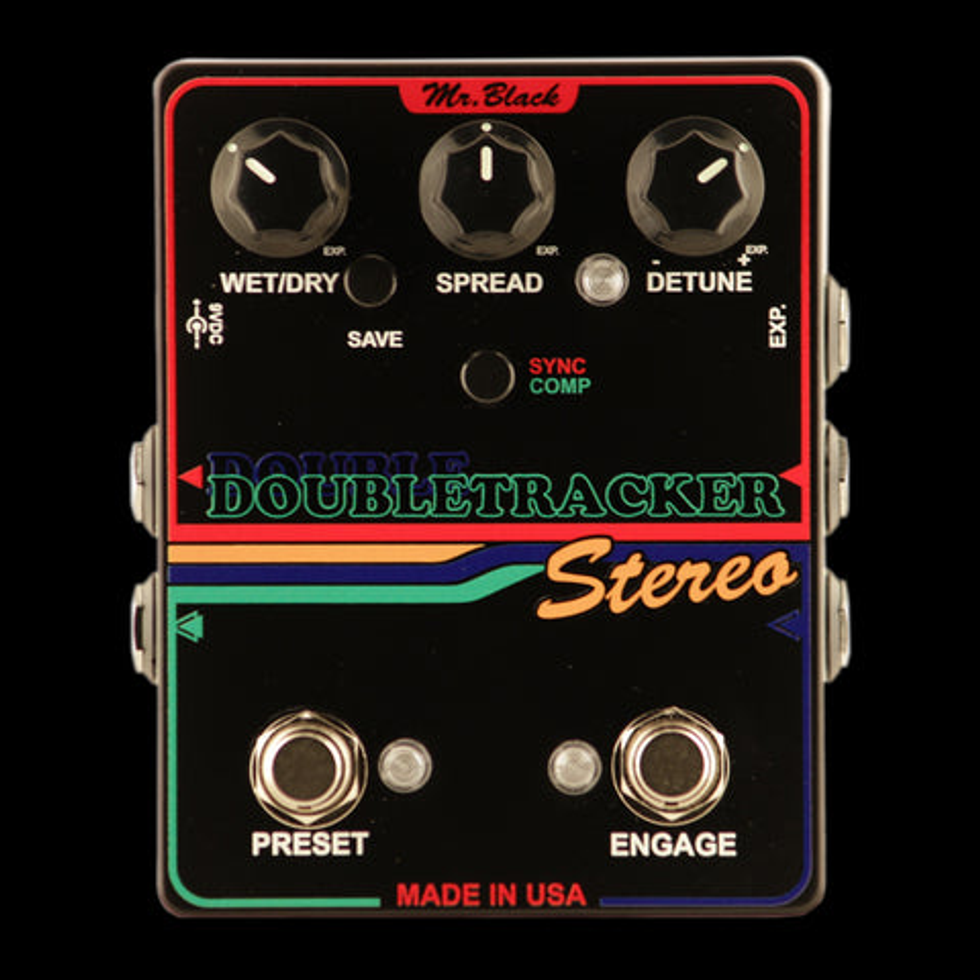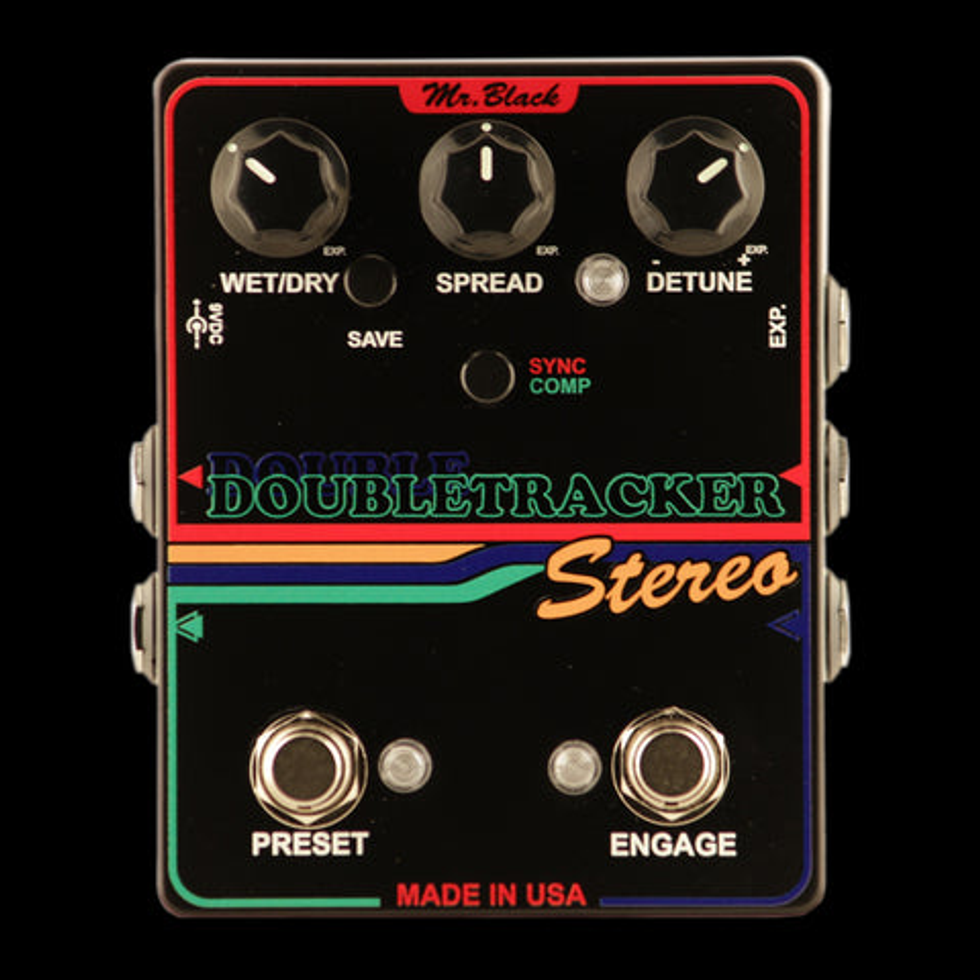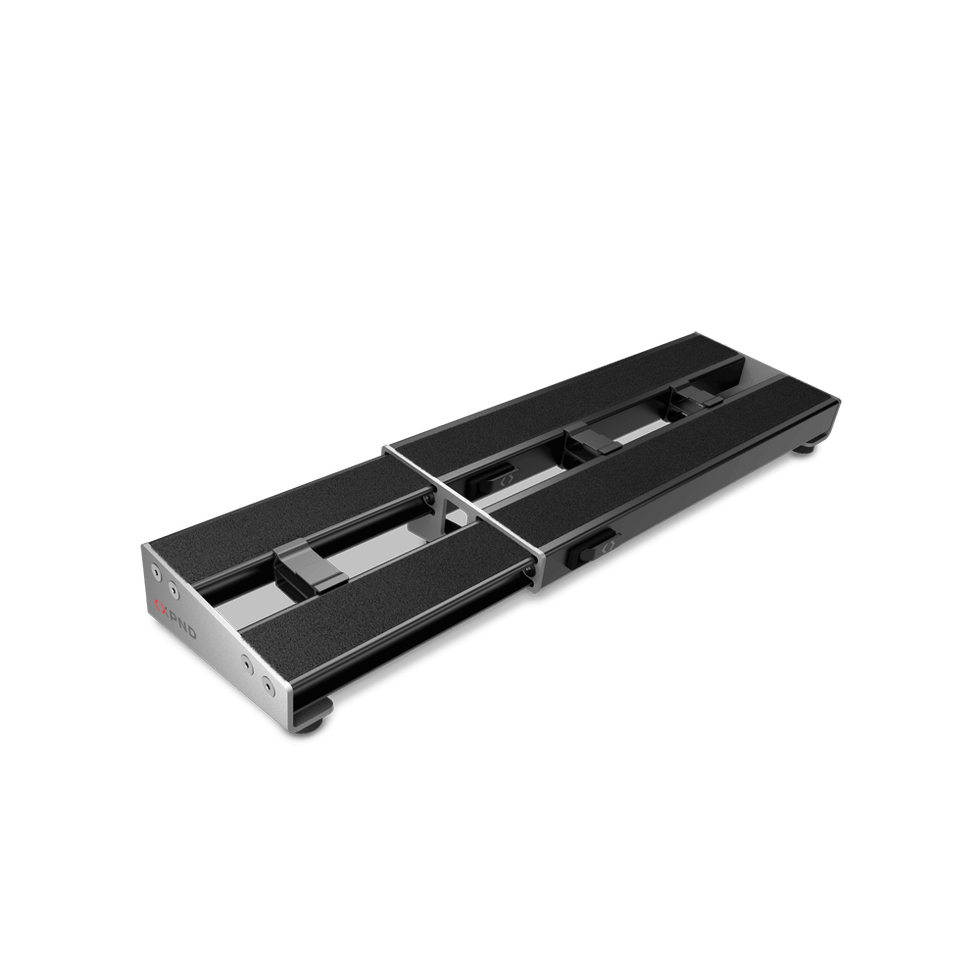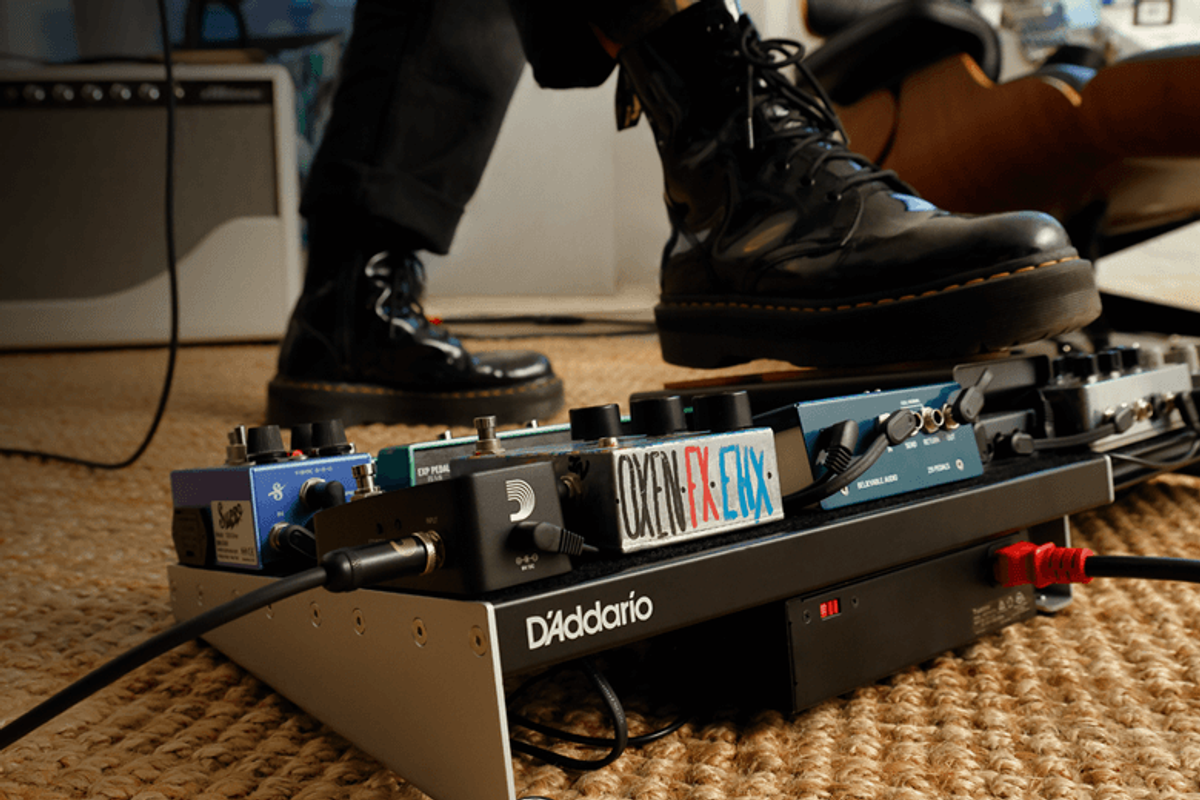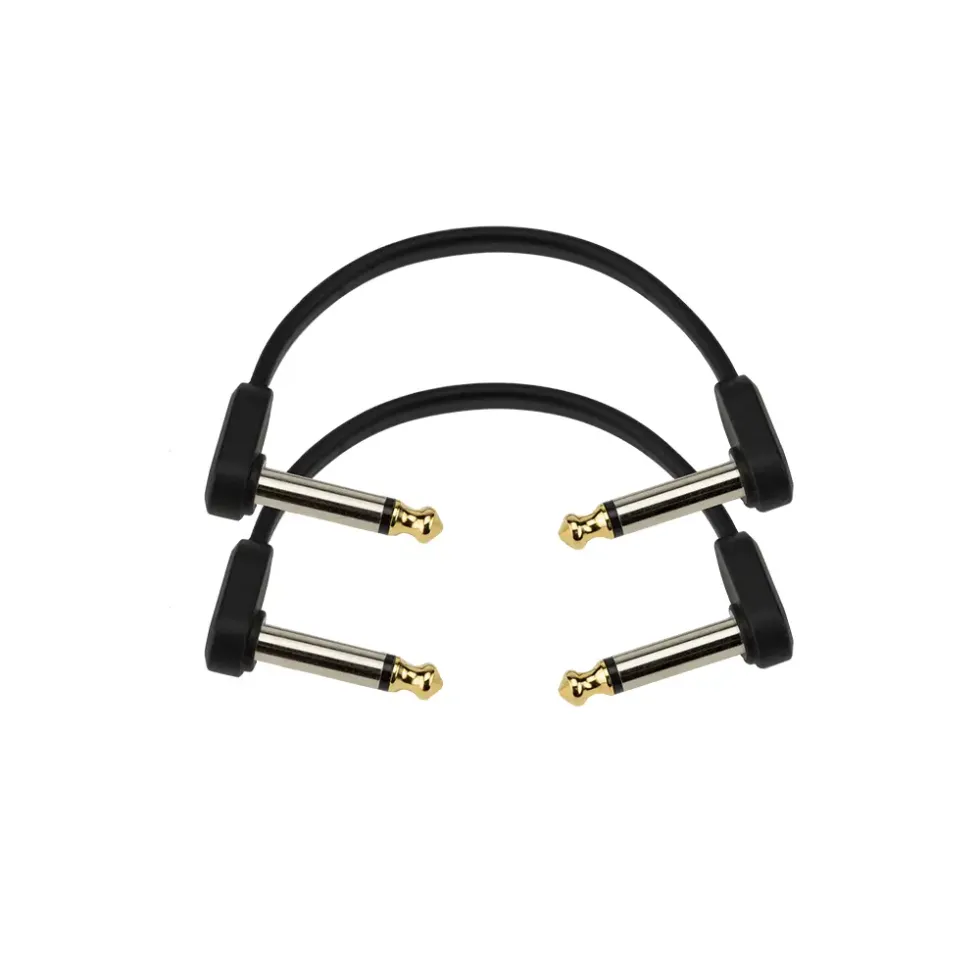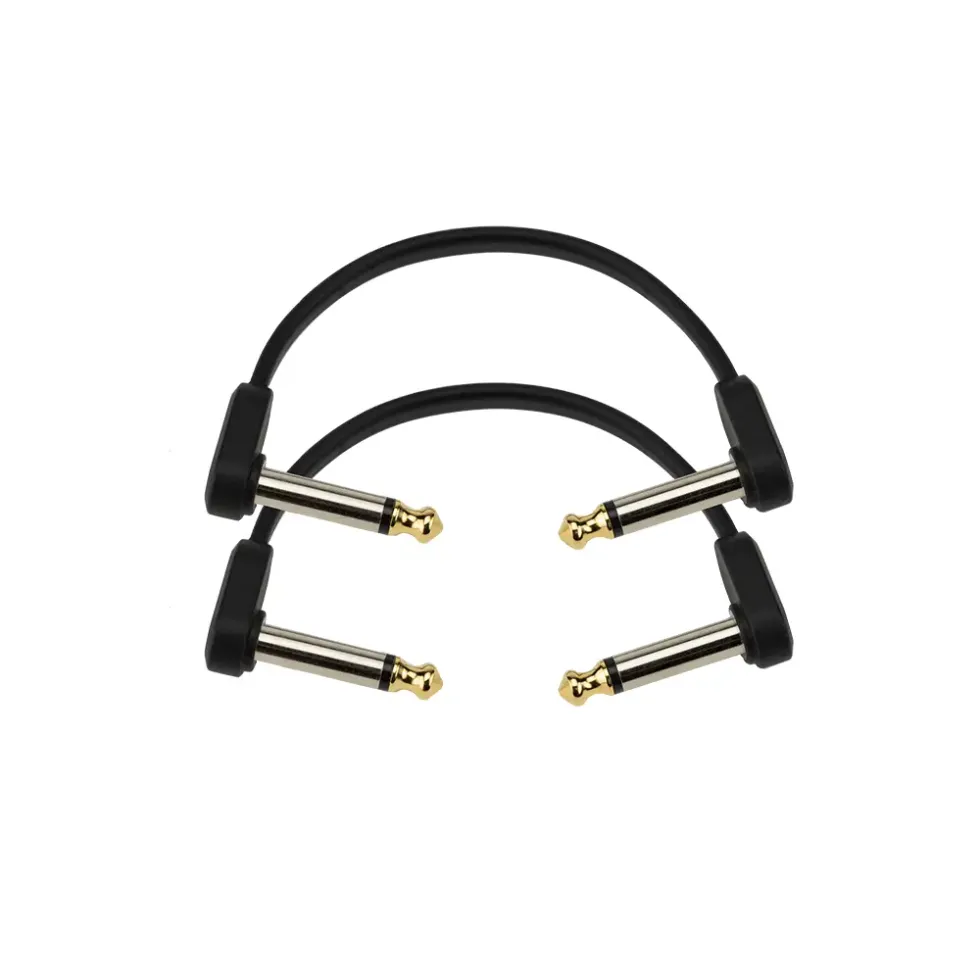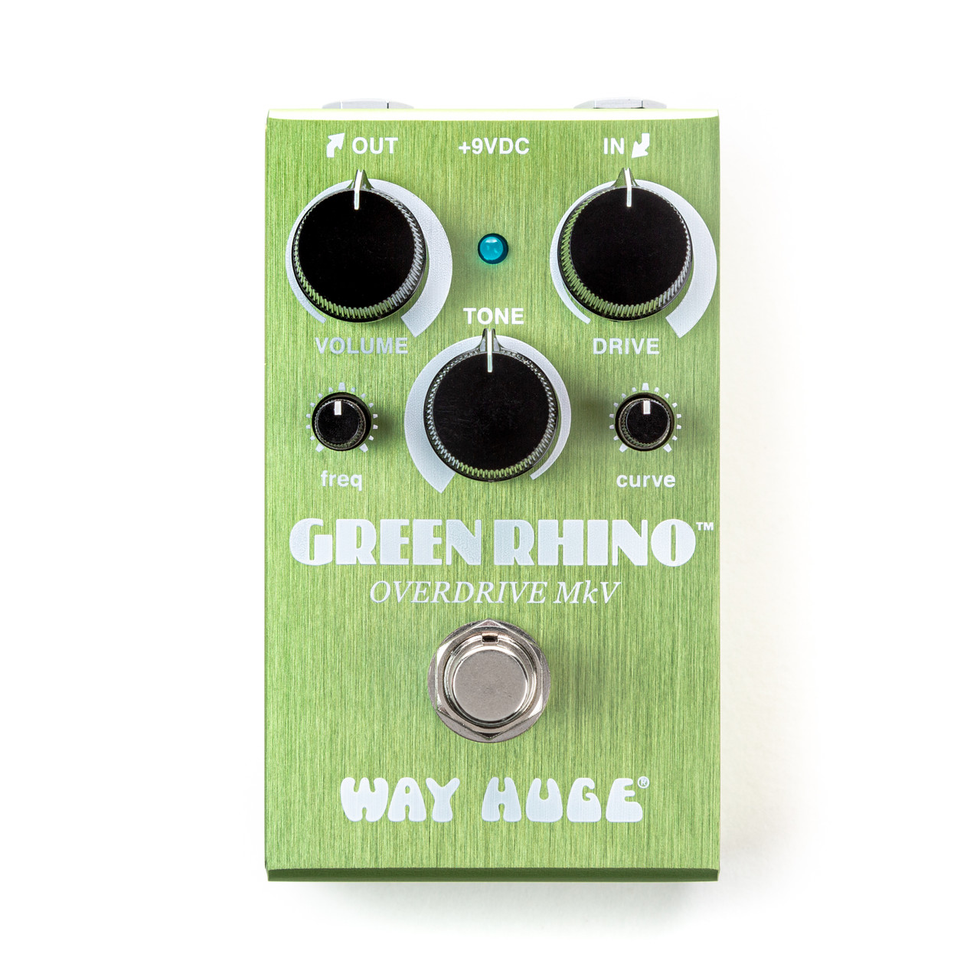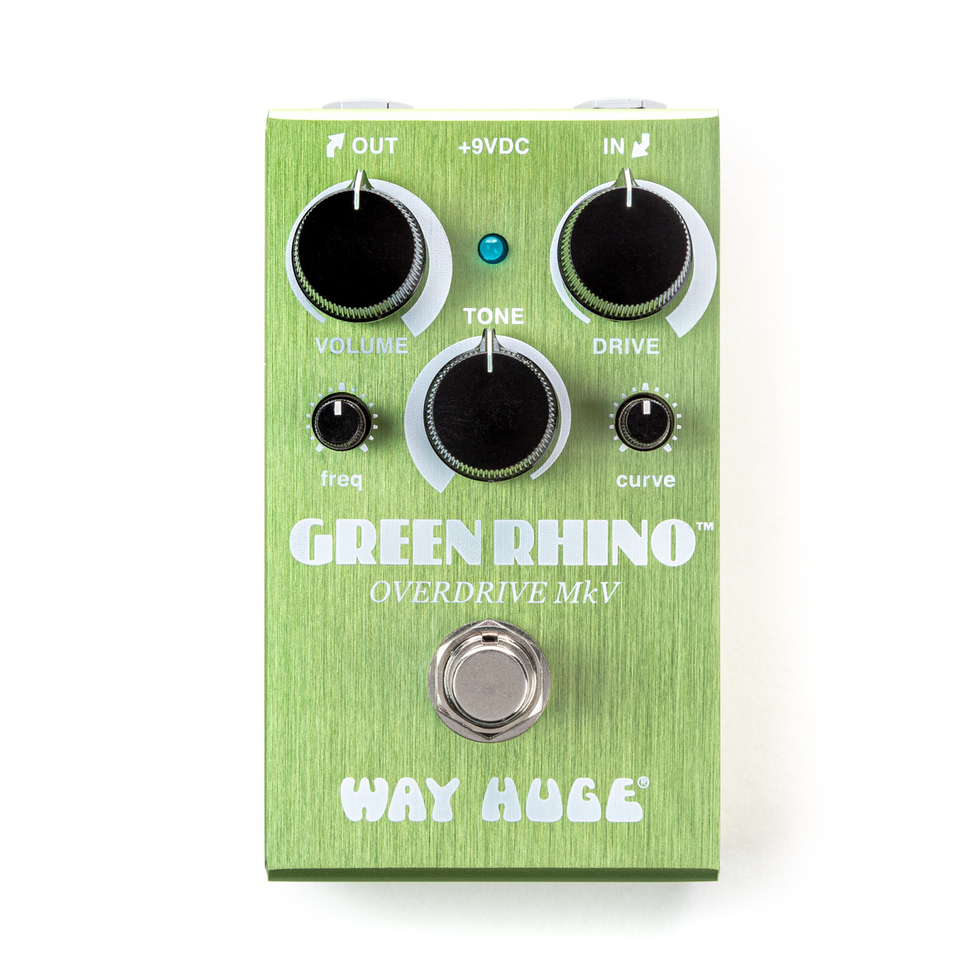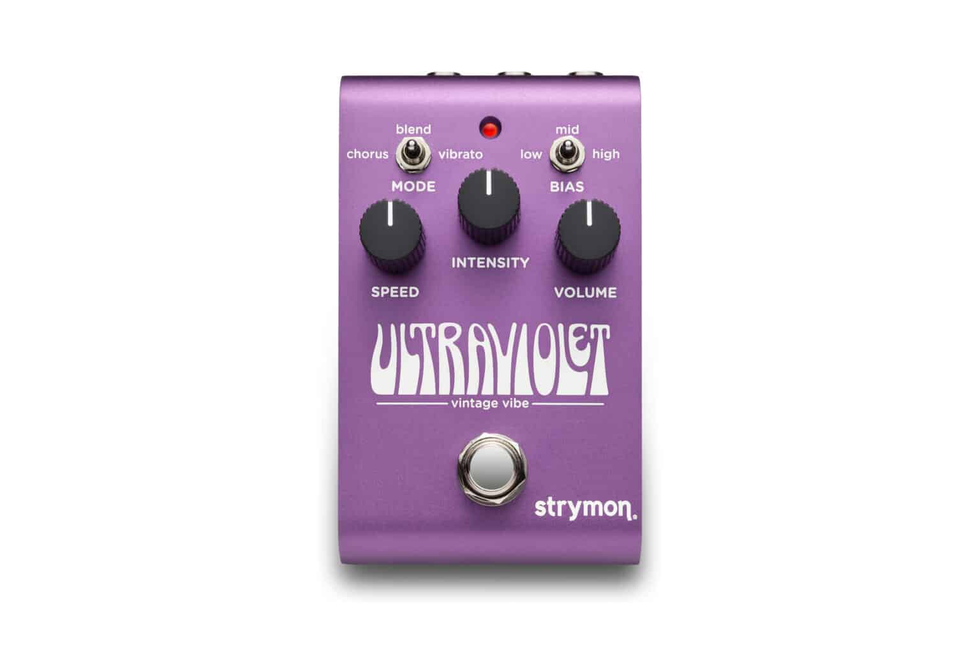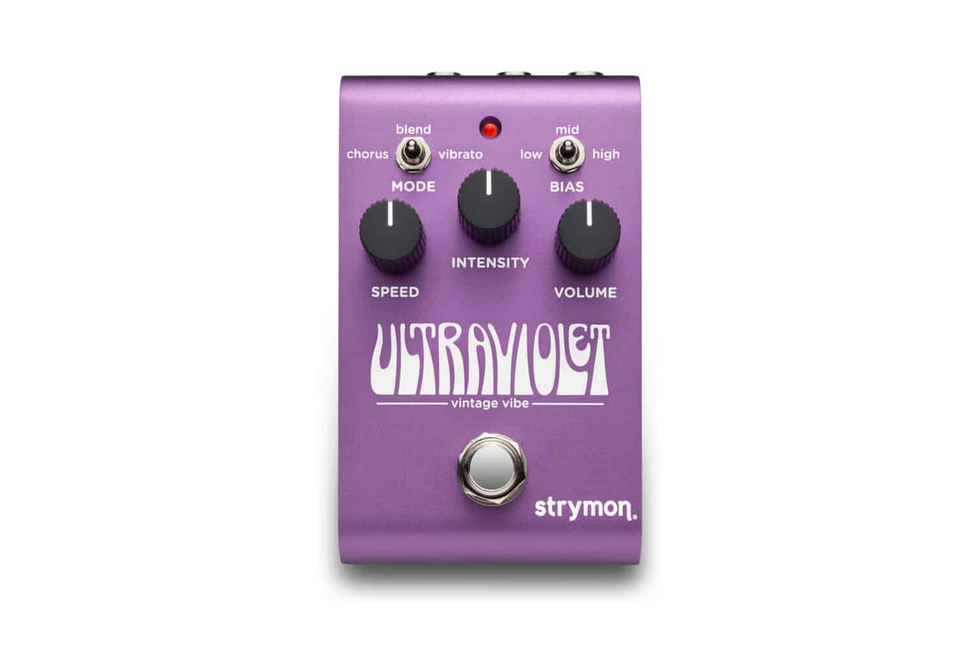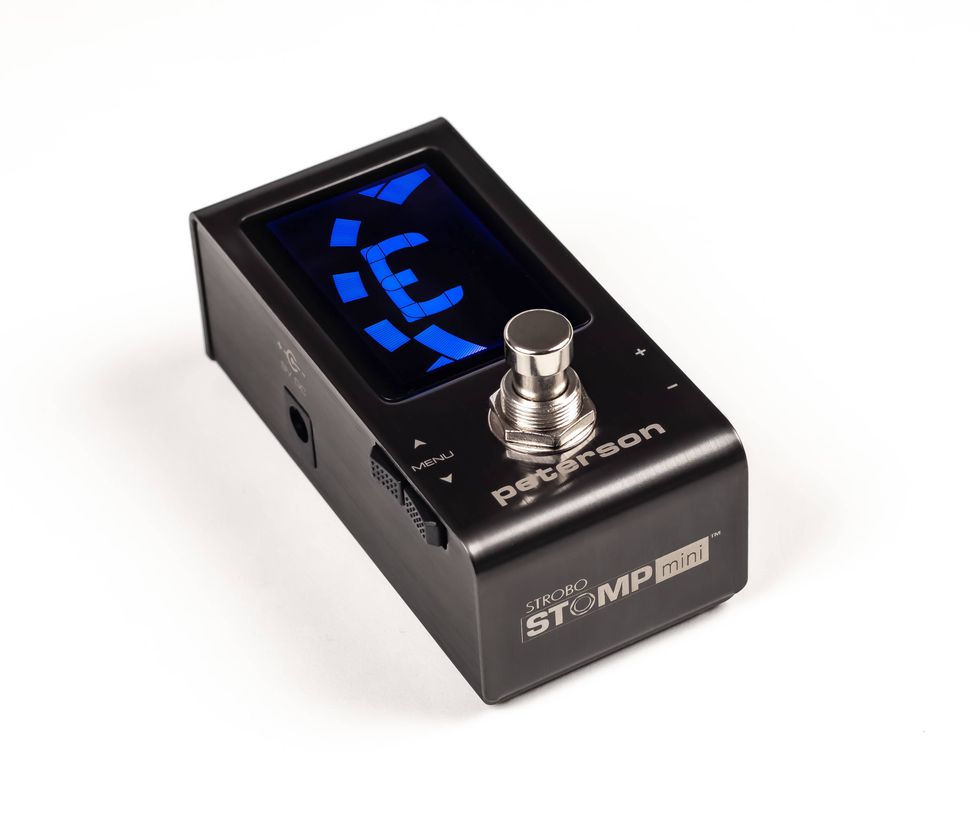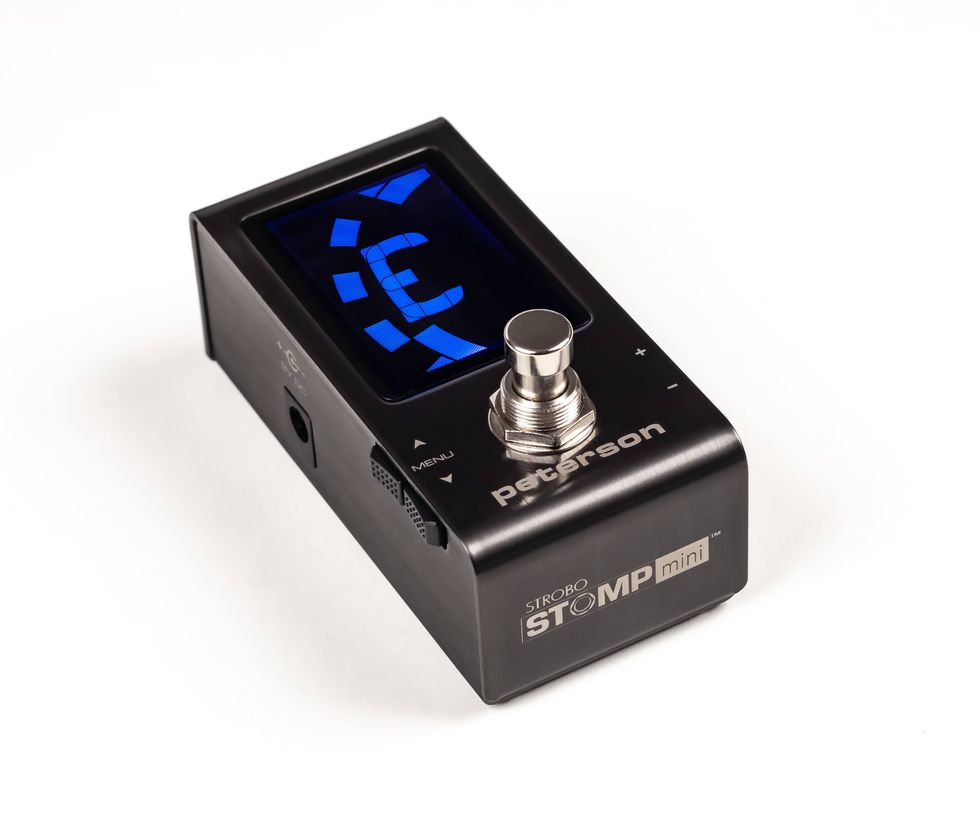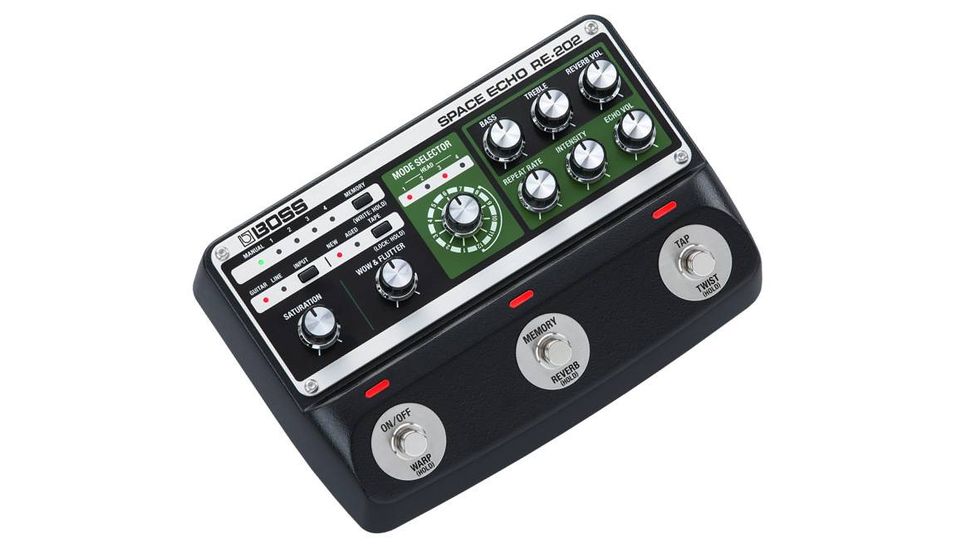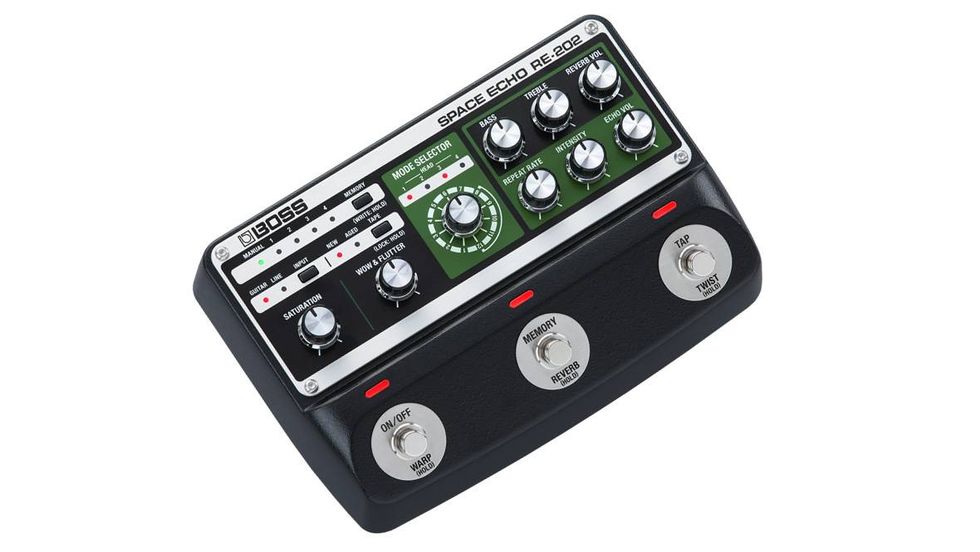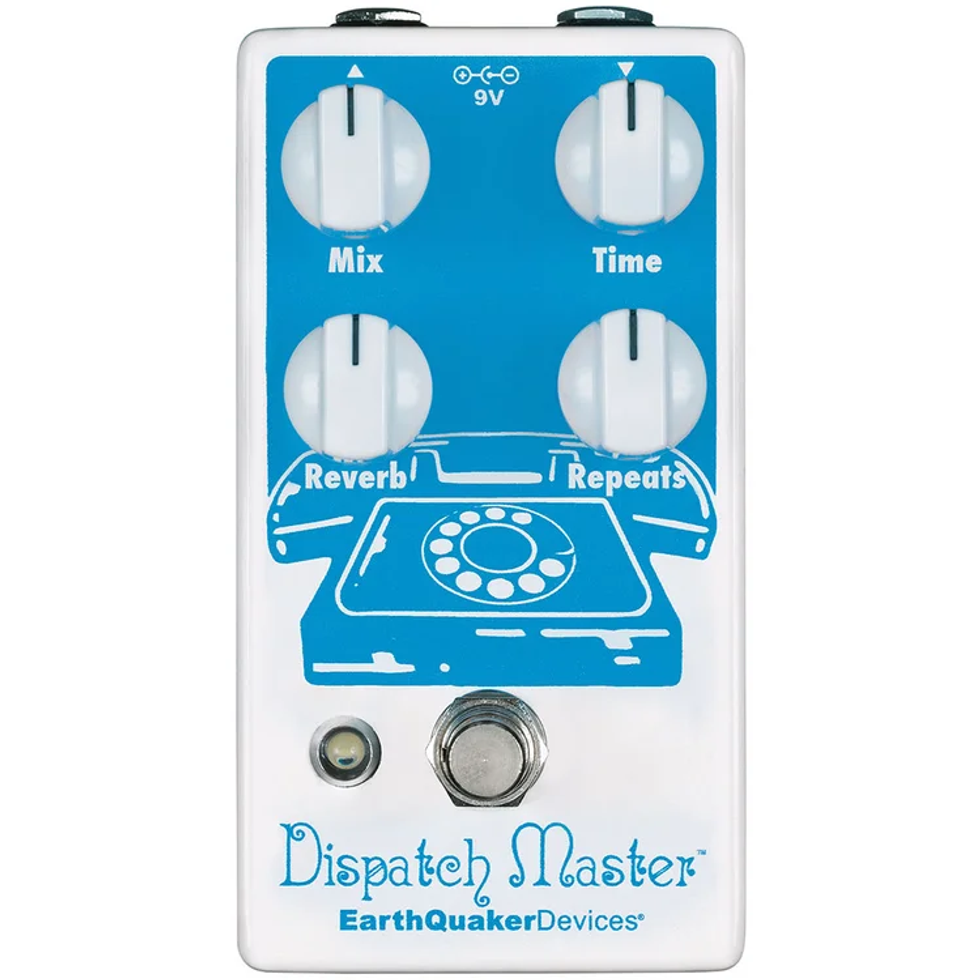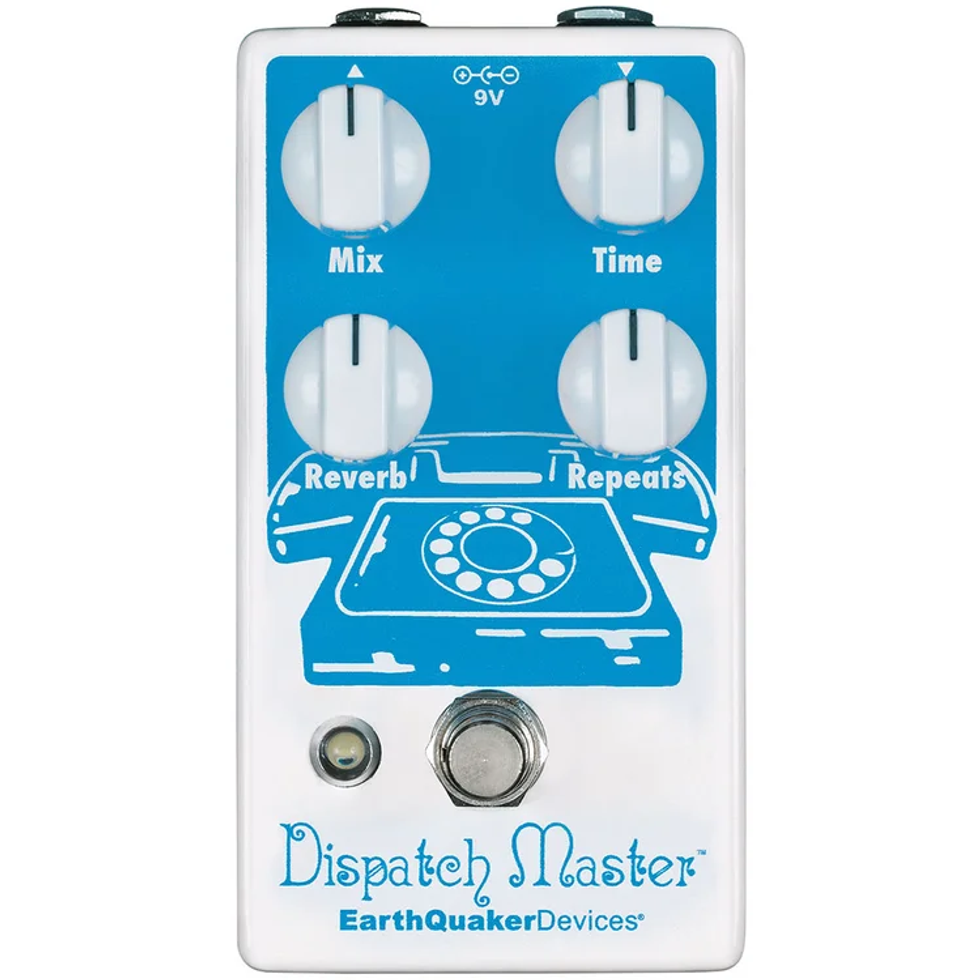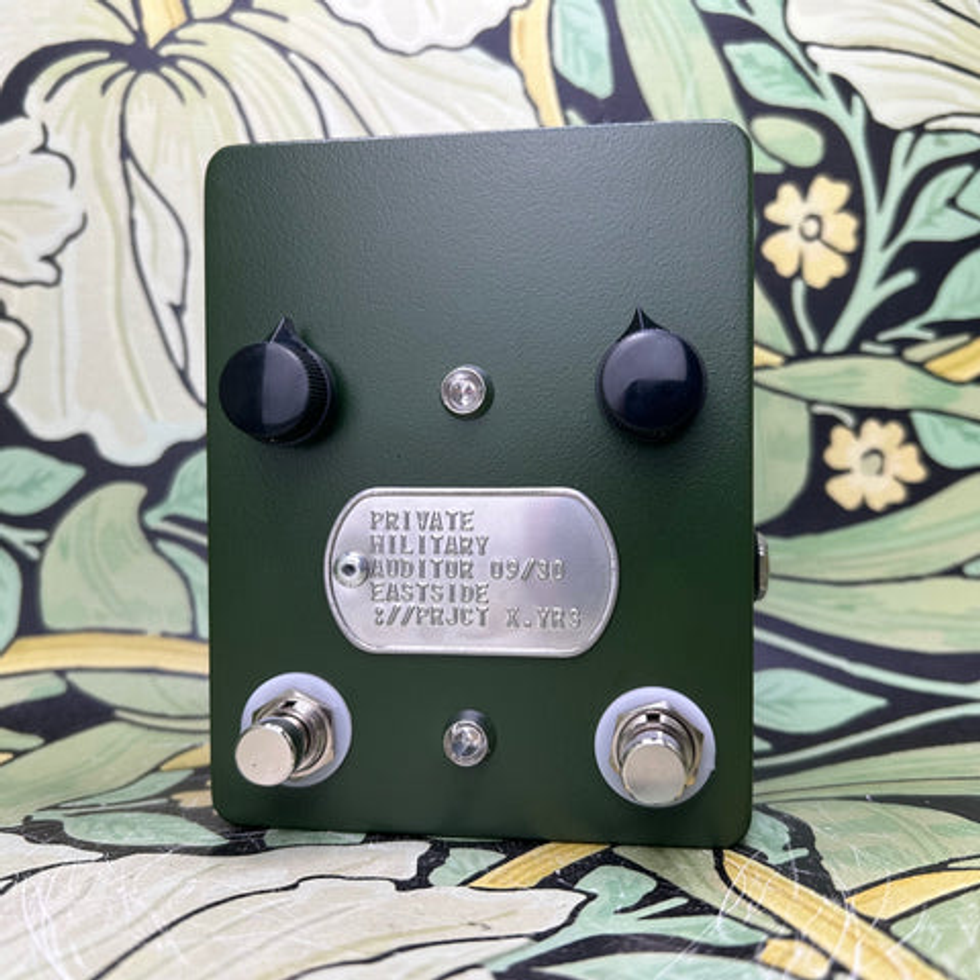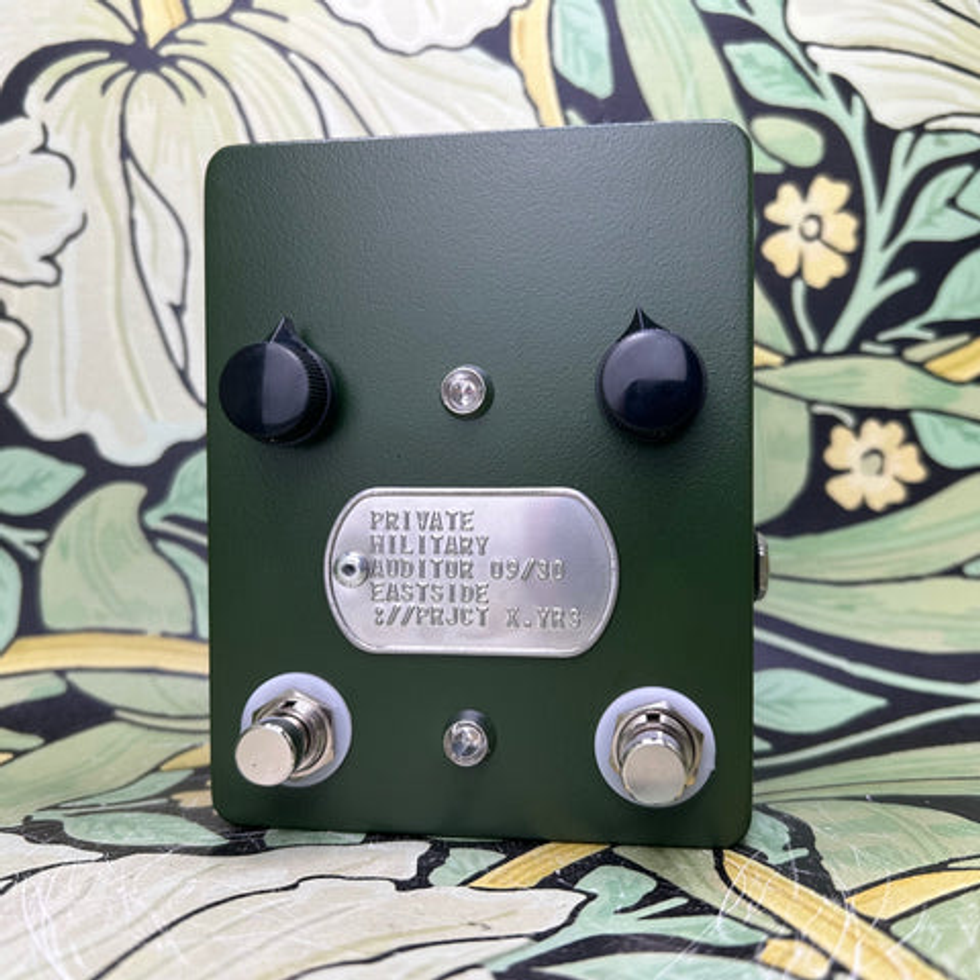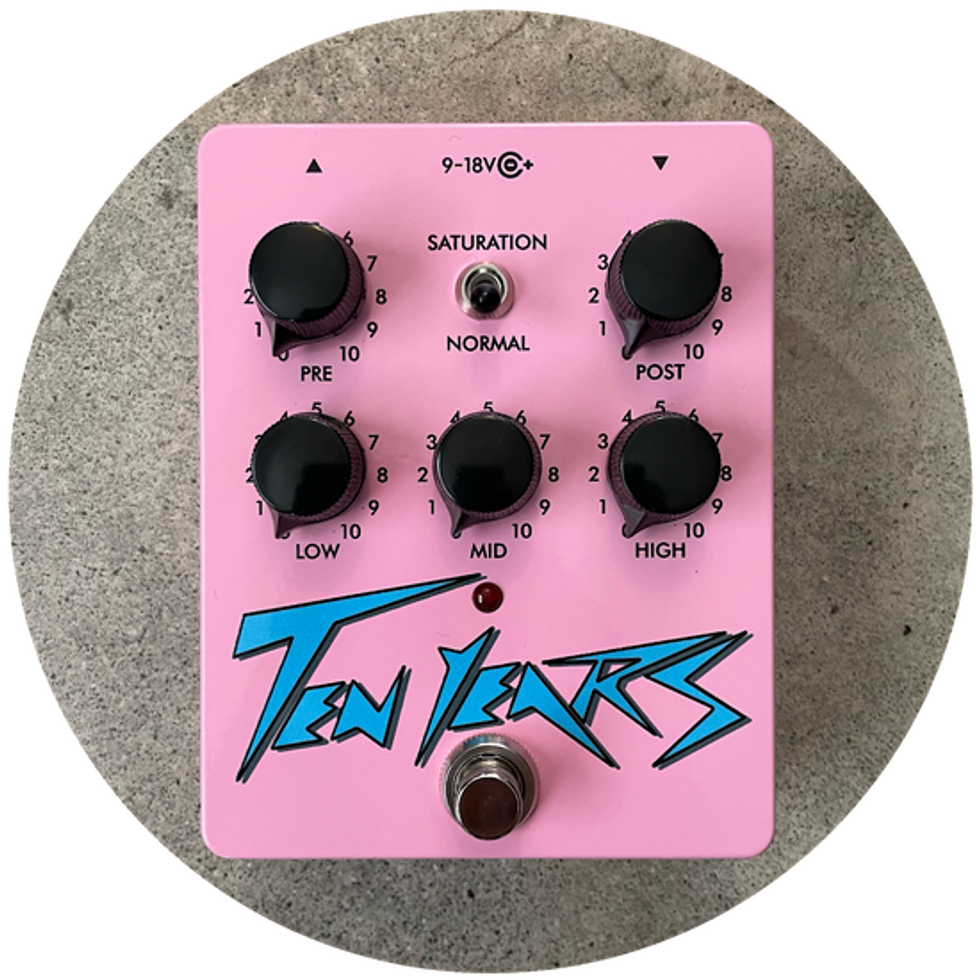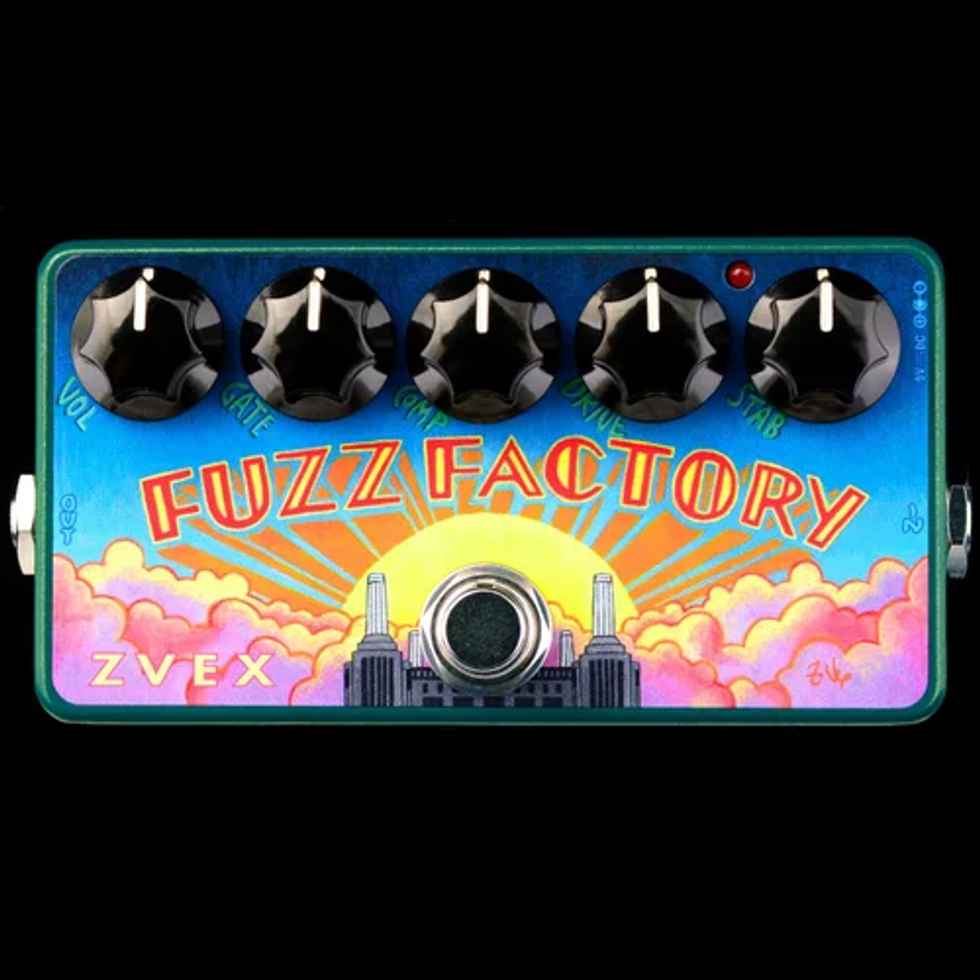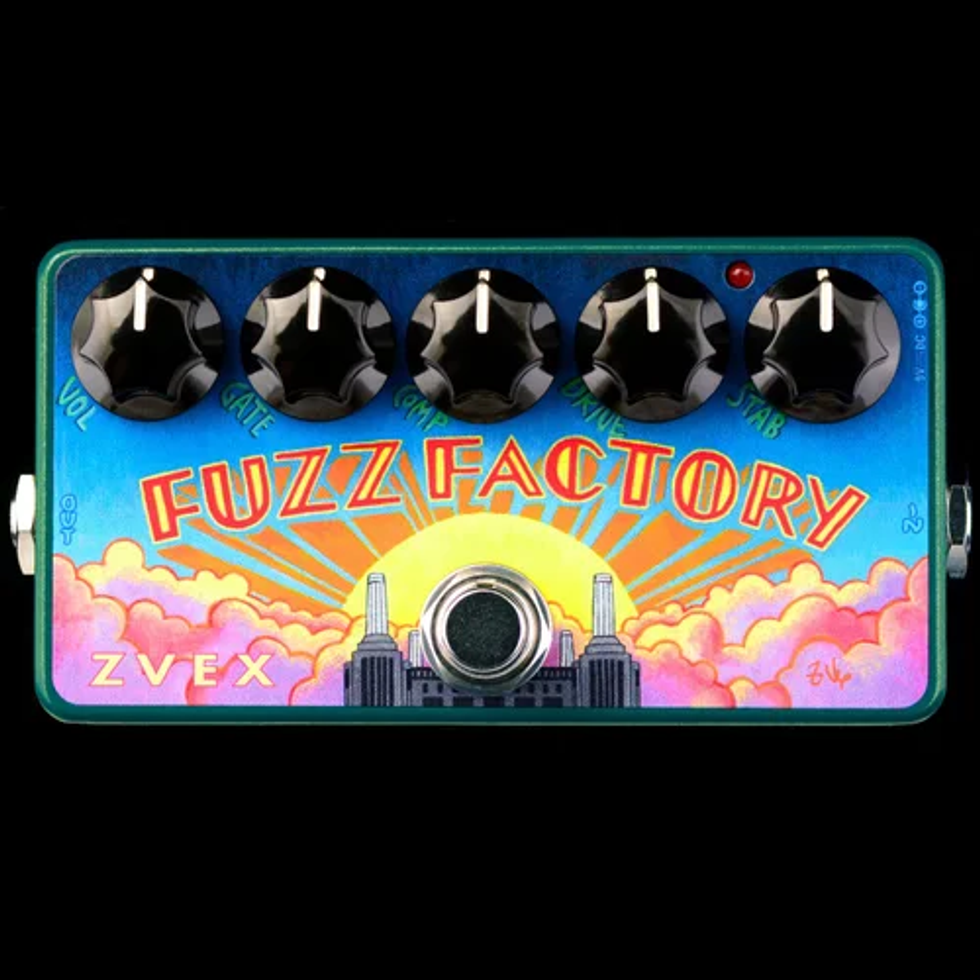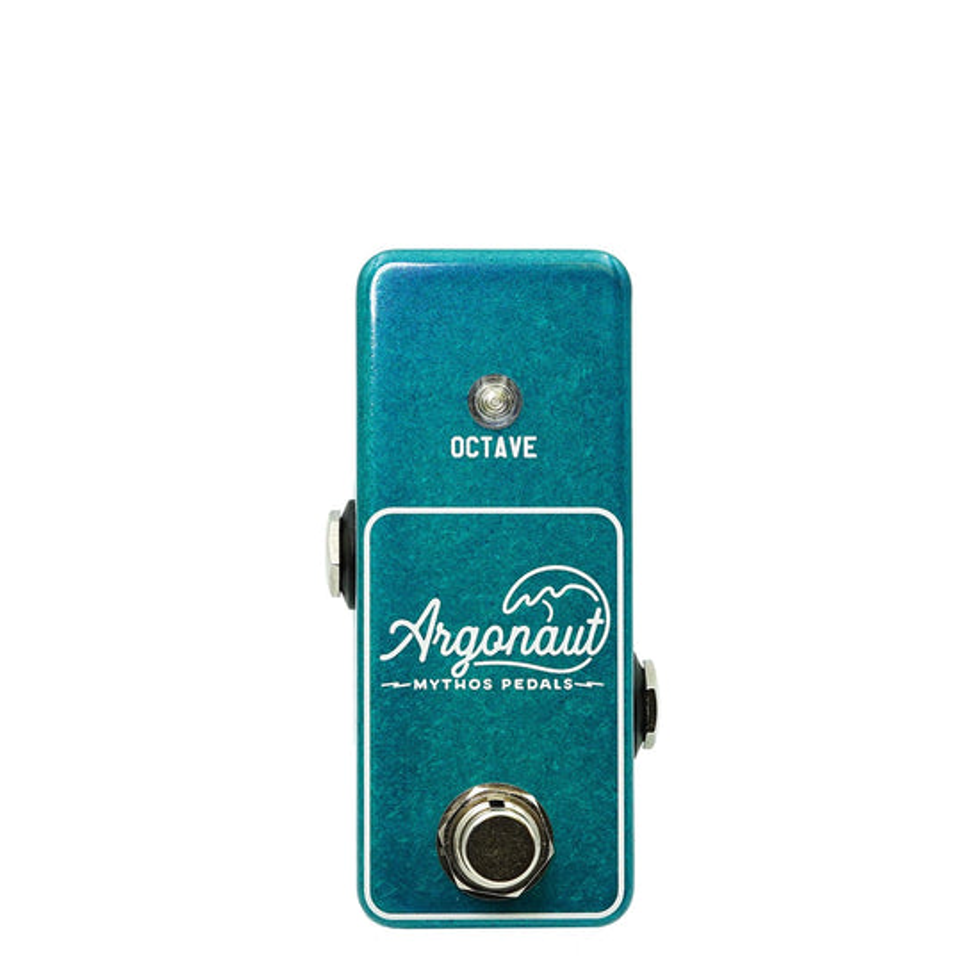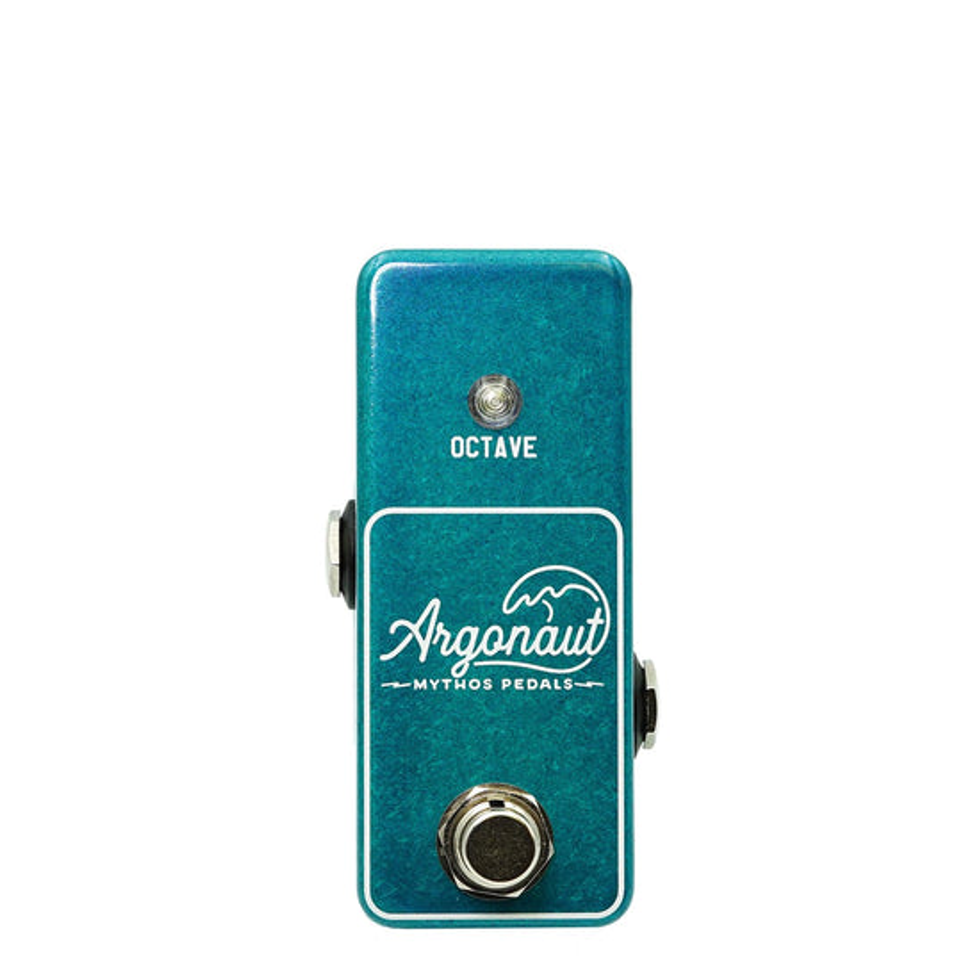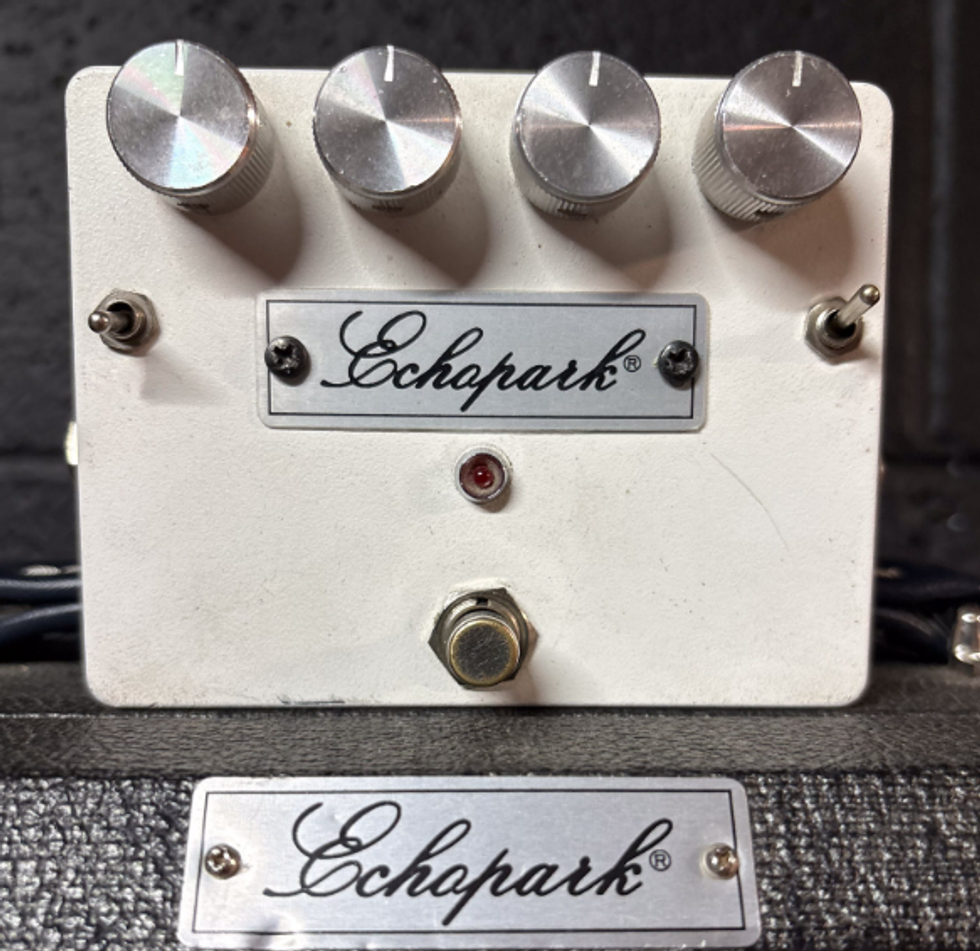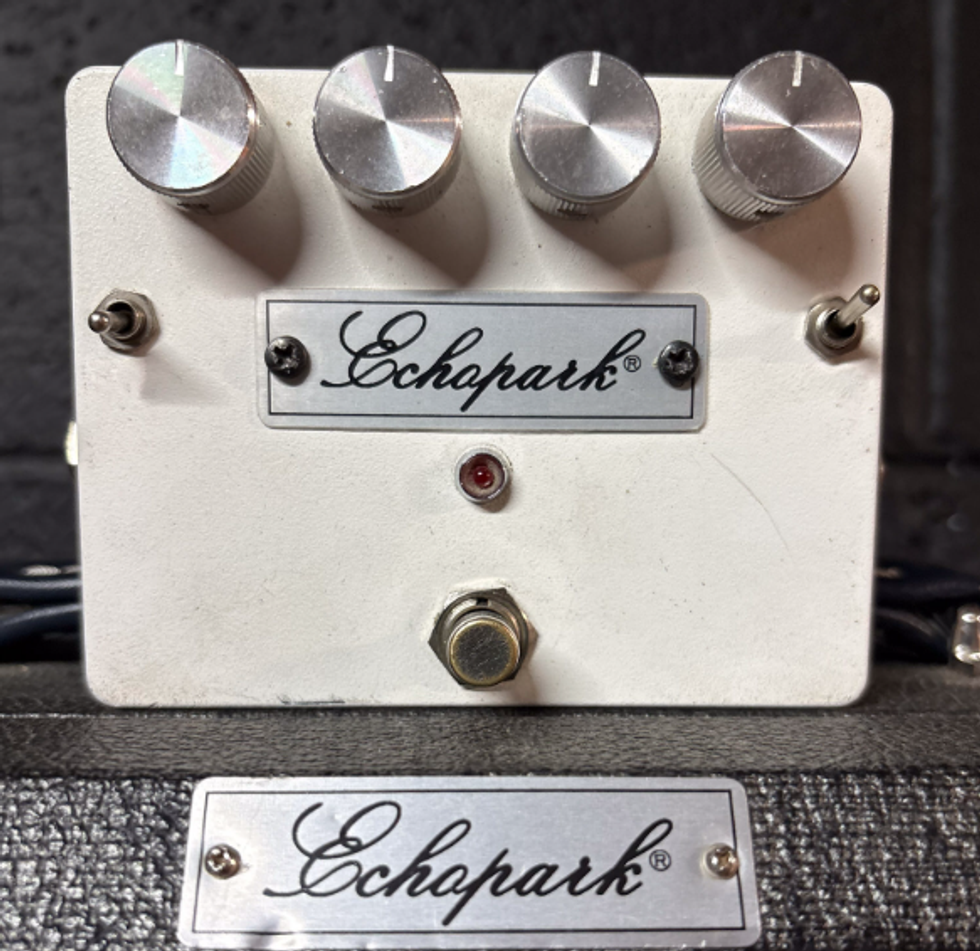Brooklyn-based band A Place to Bury Strangers creates gnarly, outlandish, ear-crushing mayhem. Their guitarist, Oliver Ackermann, keeps his volume just north of 11 while engaging in such stage antics as guitar smashing, mid-air instrument collisions, and unnatural string removal. He chains pedals together and generates multiple layers of self-oscillating chaos.
But there’s a method to the madness. Ackermann is chasing a specific aesthetic, one he started cultivating in high school. That sensibility also informs his pedal-building business, Death By Audio. It could be described as controlled anarchy.
Ackermann’s backstory reads like an aspiring guitar nerd’s dream. He grew up in Fredericksburg, Virginia, listening to his parents’ Beatles and Donovan records. His older brother turned him on to the Dead Kennedys, Minor Threat, the Ramones, and the Circle Jerks. He then discovered shoegaze and alternative bands like Sonic Youth, Ministry, My Bloody Valentine, and the Jesus and Mary Chain.
In high school he appropriated his brother’s Gibson SG, learned to play it, and started experimenting with effects. While earning a degree in industrial design from the Rhode Island School of Design, he spent much time in the library learning about waveforms and sound production. Through a process of trial and error, Ackermann taught himself the basics of effect building. “It took me years to teach myself how to solder,” he says. “I wish someone had explained basic things like, ‘You need a decent iron,’ or ‘Don’t use plumbing solder.’”
Death By Audio opened for business in 2001. He started with one pedal—Total Sonic Annihilation—took custom orders, and soon offered a line of pedals that featured outlandish sonic options not available elsewhere. The business took off, and now Death By Audio clients include maverick gearheads like Trent Reznor, The Edge, and others.
Ackermann moved to Brooklyn in 2003 and soon after joined A Place to Bury Strangers as guitarist and singer. The band’s eponymous 2007 release received an “8.4 Best New Music” rating from Pitchfork, and the group snagged opening gigs with Nine Inch Nails, the Jesus and Mary Chain, Black Rebel Motorcycle Club, and the Brian Jonestown Massacre. Eight years later, their new release, Transfixiation, continues to push the envelope.
Ackermann is thrilled. “To feel justified in what you do and create as an artist is just the greatest feeling in the world.”
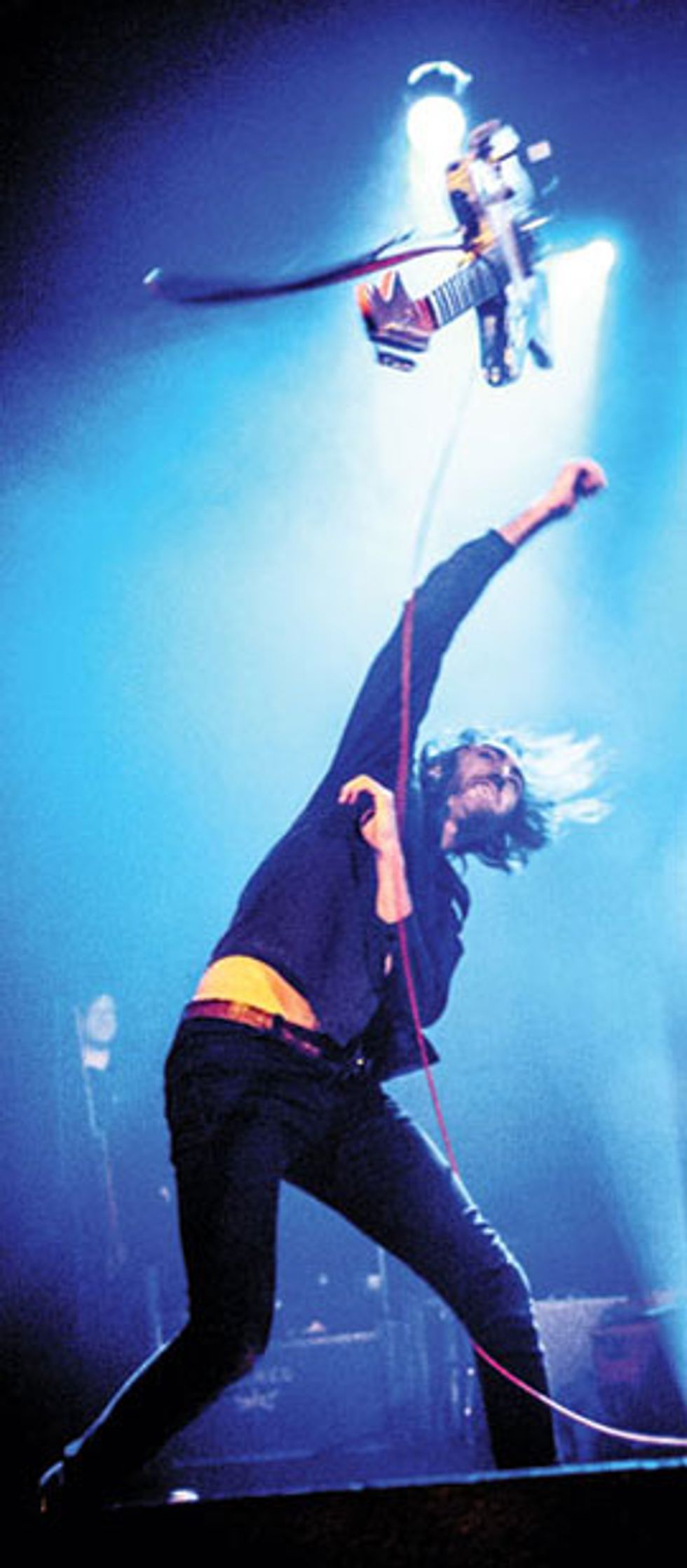
“Sometimes it’s just about the thrill of wanting to destroy your guitar.” Photo by Igor Vidyashev / Atlas Icons.
Premier Guitar spoke with Ackermann about his organic approach to recording and songwriting, developing new pedals, tinkering with circuits, and why the moniker “Loudest Band in New York” isn’t necessarily a compliment.
When did you start messing around with pedals?
Right when I started getting into guitar. A few friends and I were getting into this certain kind of music, and a lot of it was effect-driven. That’s what drew me to playing guitar. I didn’t really know what to do, but you could plug a guitar into an amp, crank it up, and it sounded crazy. We had a couple of distortion pedals we’d run our guitars through, and then we bought a 6-track tape machine with reverb. All of those things just led to that interest: how mysterious sound can be, and how easy it is to make crazy sounds. At least it seemed easy at the time.
Did you practice pedals the way you might practice scales and chords?
I don’t really practice per se. I always feel like I’m searching for new things. It’s not about repeating certain patterns. It’s about being able to adapt to a situation and do something interesting in that moment. I don’t know if I know a single scale on the guitar. I don’t really know how to play cover songs or anything like that. I just try to play with my ear and figure out what sounds interesting at that moment. That mystery about how some of these things come about is still exciting. I want to keep some of those things a mystery to keep that thrill of being a young guitarist alive.
What were you trying to achieve sonically when you started modifying and building effects?
I was a real pedal junky. I would find tons of effects pedals, and a lot of the stuff wasn’t even that expensive. It was back when eBay was new, and you sometimes found things for a dollar. I think I got that first Boss Chorus pedal for a dollar. Another time I won five MXR Flangers for about $10. Eventually I started to understand the science of these things: why different waveforms manipulated in different ways create different sounds. You realize that the way you control effects is what makes them really cool. I wanted to figure out that stuff, and then create something new that I’d never heard before.
Did you start with modifying pedals first?
I was trying to. I was also trying to build my own guitars. I was trying to push the envelope with what you could do with the electronics, using passive filters, inductors, and capacitors, and also trying to modify pedals—and just kind of failing. The first pedal I modified successfully was an Electro-Harmonix Electric Mistress. I changed the range of the speed and how it interacted with the positive and negative forms of the slope, and also created forced feedback within itself to oscillate and create noises. What really gave me a lot of knowledge was starting the effects pedal company. I used to take custom orders for anything, and that forced me to figure out how to build some projects that I’d agreed to do.
People gave you orders, and you just agreed, whether you knew how to do it or not?
Totally. I’d say, “Sure, I can do that. It’s going to take me a month.” Then it would take three months, and they would be pissed off. They gave me like $200 for three months of labor. But I got to learn something in the meantime.
What was the first pedal you built from scratch?
It was a multi-booster. I figured out how to use a transistor as an amplifier and switch between different capacitors.
“Our philosophy is to stay an actual band—just guitar, bass, and drums—and not wimp out,” Ackermann says. “I don’t know if that’s a silly concept, but it’s to not ever get soft as an artist.” Photo by Igor Vidyashev / Atlas Icons.
Let’s talk about your band. Does A Place to Bury Strangers have a musical philosophy?
I think so. It’s a way to stay true to what I thought was cool and honorable when I was a kid. Our philosophy is to stay an actual band—just guitar, bass, and drums—and not wimp out. I don’t know if that’s a silly concept, but it’s to not ever get soft as an artist. Create all these sounds with real instruments, and don’t turn into a band that isn’t trying hard and isn’t creating fast and crazy music.
What is your songwriting process? Do you compose by yourself, teach songs to the band, and then create soundscapes on top of that? Or is it more of a group collaboration?
This record has a lot of group collaboration, but there are songs that I wrote from scratch to finish. I really wanted all of us working together as much as possible. If someone writes their own parts, it’s something they connect with emotionally. I think that’s stronger than writing a part and telling them, “This is how it goes.” You lose a little bit in translation. We spent tons of time thinking of ideas, trying to work on them, even sitting in practice spaces just making noises, and sometimes they were adapted into songs. We wrote tons and tons of stuff and then waded through it, figuring out what worked.
Oliver Ackermann's Gear
Guitars
Assorted Fender Jaguars and Jazzmasters
Magnatone Typhoon
Amps
Markbass Little Mark III (500-watt head)
Effects
Death By Audio Armageddon (Apocalypse prototype)
Homemade wah (based on a simple three-transistor inductor wah circuit)
Homemade preamp with cascaded reverb and delay chips
Strings and Picks
DR Strings (any gauge)
Sometimes the pedal dictates how you’re going to play. Do you just set up gear, press a few buttons, and see what happens? Or are you more methodical?
It’s not totally random. I have ideas and sounds in my head related to what’s going on with different equipment. But still, I’m searching for something surprising to jump out. I’ve been recording music since 1995 or so. I have ideas that I know might work, and then I have those branches of ideas that I really want to try and get excited about. Sometimes you try something and it happens to surprise you with a really cool sound. I don’t like to stick with one particular method—it’s constantly searching, exploring, and having fun with your friends.
Do you show up to the studio well rehearsed, or do you improvise?
We had the luxury of rehearsing and recording at our own studio, which we built. This album ended up being about finding that moment when something really exciting happens. Some of those times when we were trying to write and record a song, and it sounded better right at the beginning than we could ever capture it again.
Were some of these songs recorded in Europe?
Two songs were recorded in Norway: “We’ve Come So Far” and “Deeper.” Both have multiple guitar tracks. Our friend Emil Nikolaisen from Serena-Maneesh was playing with us, and he helped us record those songs. He co-produced them, as well as others that aren’t on the record. We recorded the song live first, where we would all play guitar and Dion [Lunadon] would play bass. Then we ran through the song a few more times, playing guitars and trying different things, like miking pianos to capture the reverb off a guitar’s strings.
Are there lots of overdubs, or was it more about capturing the band as is?
Both. Some songs have maybe 30 guitar parts, and some songs have only one. Sometimes the song is a lot of different guitar parts, composed around each other and precisely placed and played to produce weird, interacting counter-harmonies. Sometimes it’s just about the thrill of wanting to destroy your guitar.
What’s a song with 30 guitar parts?
“We’ve Come So Far.” It’s got tons and tons of tracks, and there are different keys of feedback playing together. It was fun to experiment and find those sorts of things.
What do you look for in a guitar?
I’m basically looking for something that won’t break too easily and that I can buy replacement parts for as need be. It also has to have a tremolo in that [Fender Jaguar/Jazzmaster] style. I’d prefer to play a Magnatone Typhoon, but ensuring that I can get another one if the neck breaks is very hard to do. I’ll use any string gauge, but I only use DR Strings. We throw our guitars around and purposefully try to rip the strings off all the time. DR strings just don’t break. Maybe I strum harder than people should, but a lot of other strings just break apart.
YouTube It
Hear Oliver Ackermann and “the loudest band in New York” make some noise at Austin’s 2014 Psych Fest. Fast-forward to 5:45 to see Ackermann smash his guitar around.
Your road guitars take a lot of abuse. Do have nice gear back home?
Definitely. I have a 1965 Jazzmaster that I don’t throw around, though I used to at one time. I also have a Magnatone Typhoon and a Gibson ES-135.
Do you have a pedalboard on tour?
I do. I used to be really anti-pedalboard, but then I realized that your pedals and cords work way better when they don’t have beer all over them from constantly being plugged in and out. It made more sense to have them plugged in all the time.
Do you ever mess around with non-guitar noise generators?
Totally! A while ago we made drum kits out of sounds like drills, throwing stuff on the ground, and slamming washing machine doors. Dion played bass with a drill. I’ve used things like strobe lights—or any sort of electrical interference—to make sounds. If it seems industrial enough or crazy enough, we’ll go for it.
A Place to Bury Strangers is often called the “Loudest Band in New York.” How do you feel about that?
I guess that sounds cool and dangerous if you’re impressed by loudness. But it’s not really our focus to be the loudest band anywhere. But we do like to play loud, so I’m not going to fight it. It’s just a little silly.
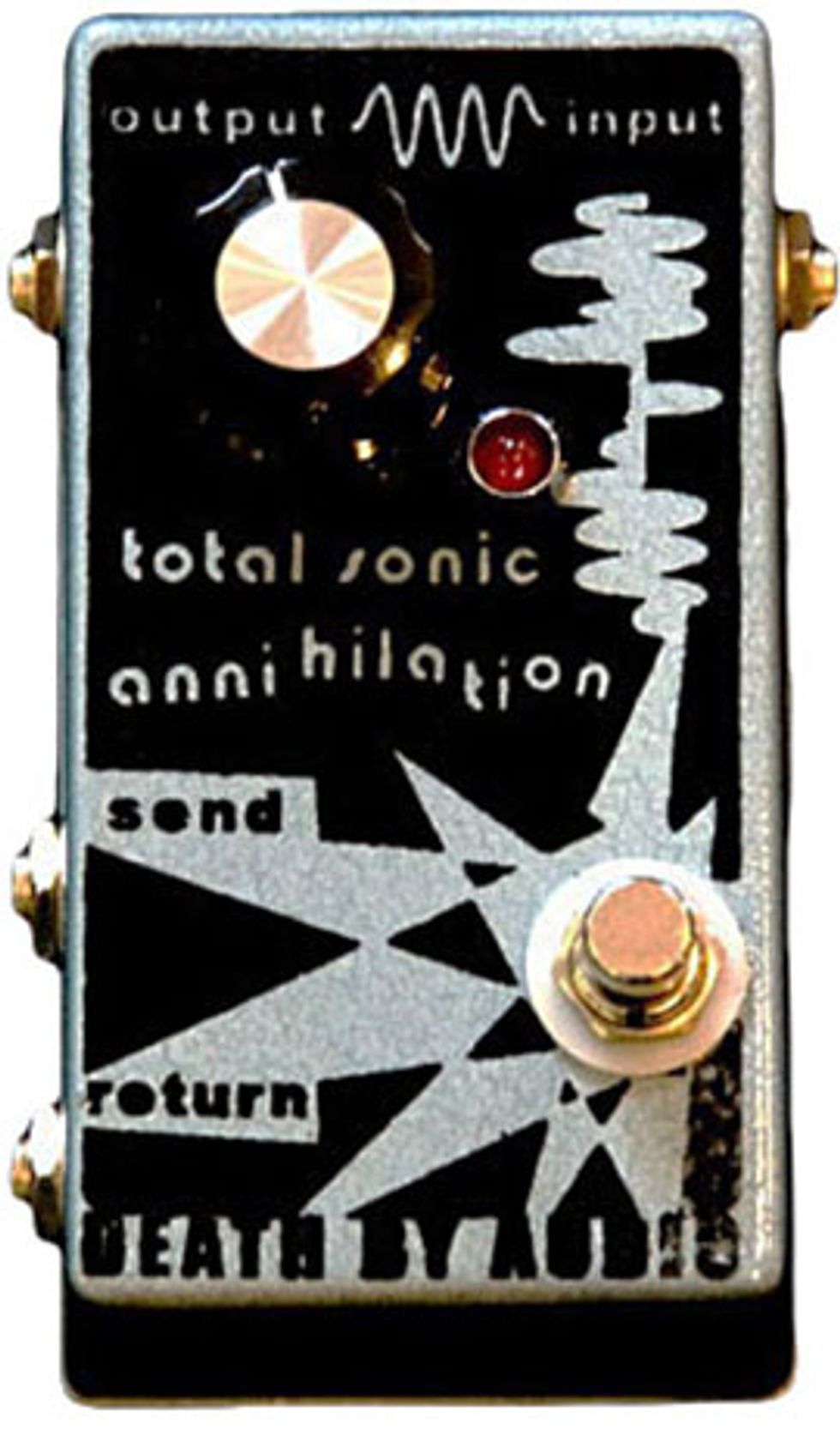
Total Sonic Annihilation
Total Sonic Annihilation is the pedal that launched Oliver Ackermann’s company, Death By Audio. “I had this idea that I needed to make $3,000 in one month to go on a trip to Europe,” Ackermann says. “I sold enough Total Sonic Annihilation pedals to make $3,000. When I came back from my trip, people were still interested. I decided to take advantage of this opportunity to use the things I’d learned to help other people who were searching to create sounds.”
Total Sonic Annihilation is simple pedal: Just an effect loop and a knob. It loops connected effects back into themselves, creating wild oscillation and noise. TSA’s single knob determines how many times the effects feed back.
The concept works with most standard effects, though it could break an older effect or a power amp. “I’ve never had any effects break, and I’ve never heard stories of them breaking,” insists Ackermann
Death By Audio stopped building new Total Sonic Annihilation pedals last year, but old ones have fallen into some big hands. “I know Jeff Tweedy from Wilco used one for a while,” says Ackermann. “The Edge bought one, too, though I don’t know if he uses it. I know that Lou Reed suggested that someone get that pedal, though I don’t know if he used it. I can’t really verify any of that information.”


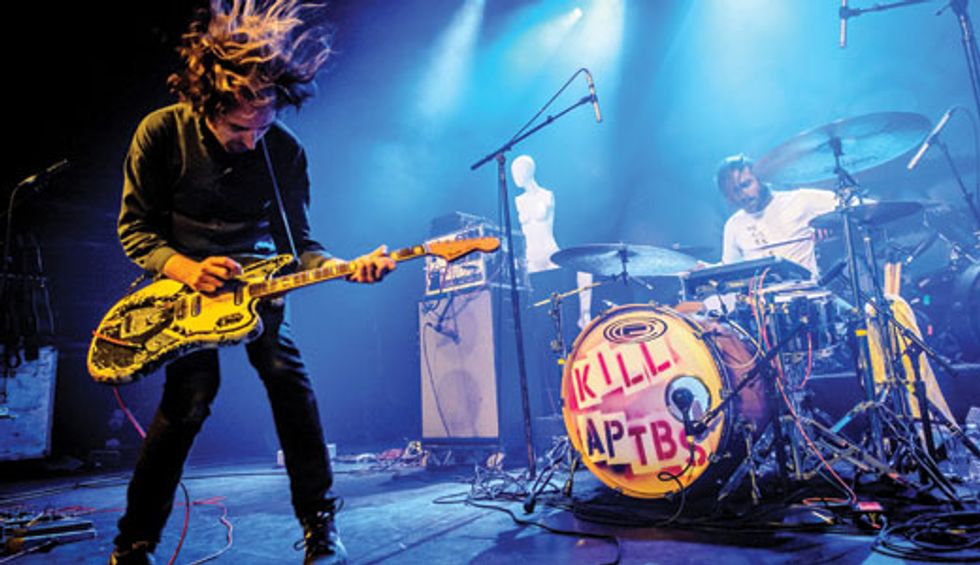












![Rig Rundown: AFI [2025]](https://www.premierguitar.com/media-library/youtube.jpg?id=62064741&width=1245&height=700&quality=70&coordinates=0%2C0%2C0%2C0)












 Shop Scott's Rig
Shop Scott's Rig